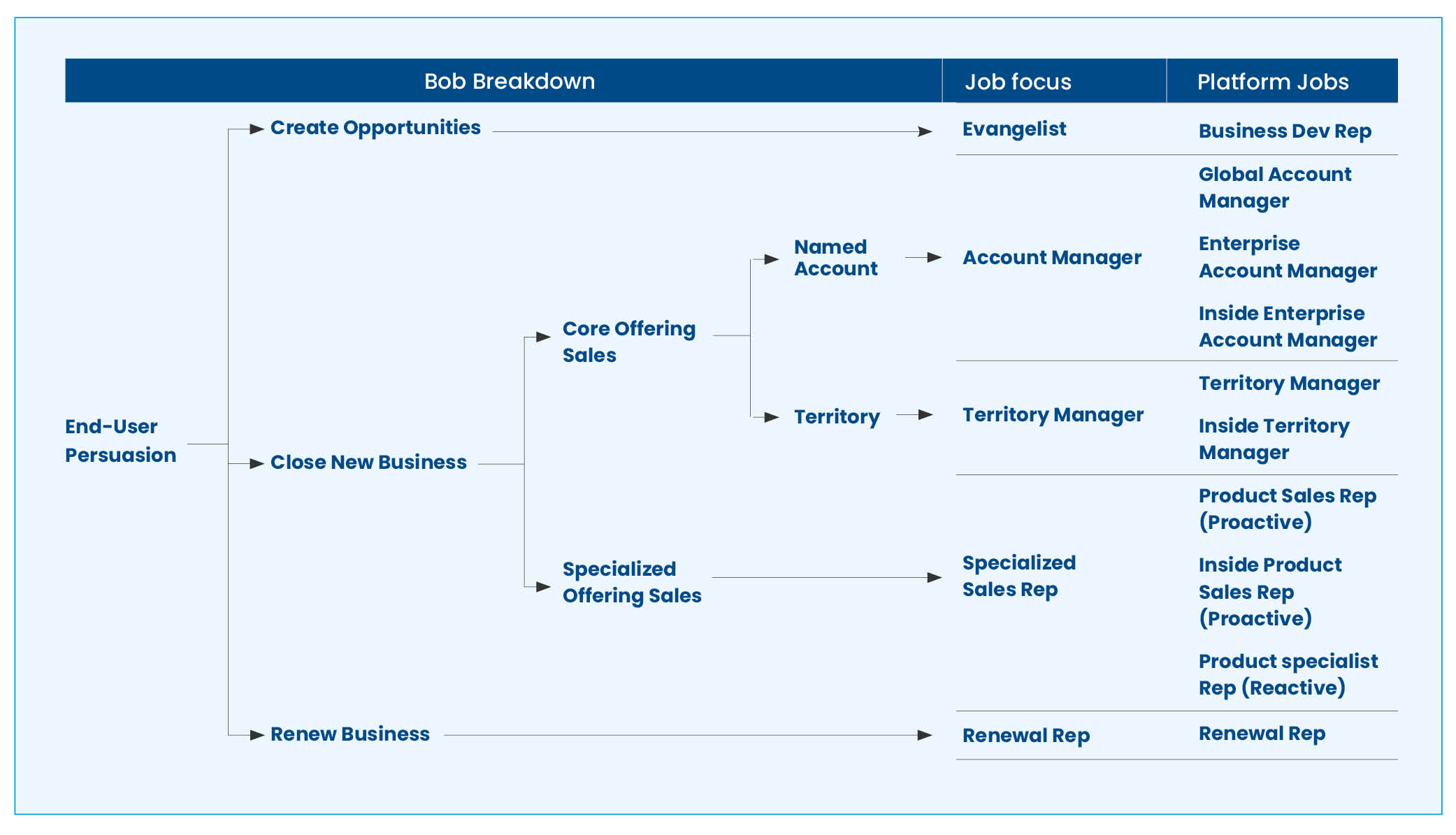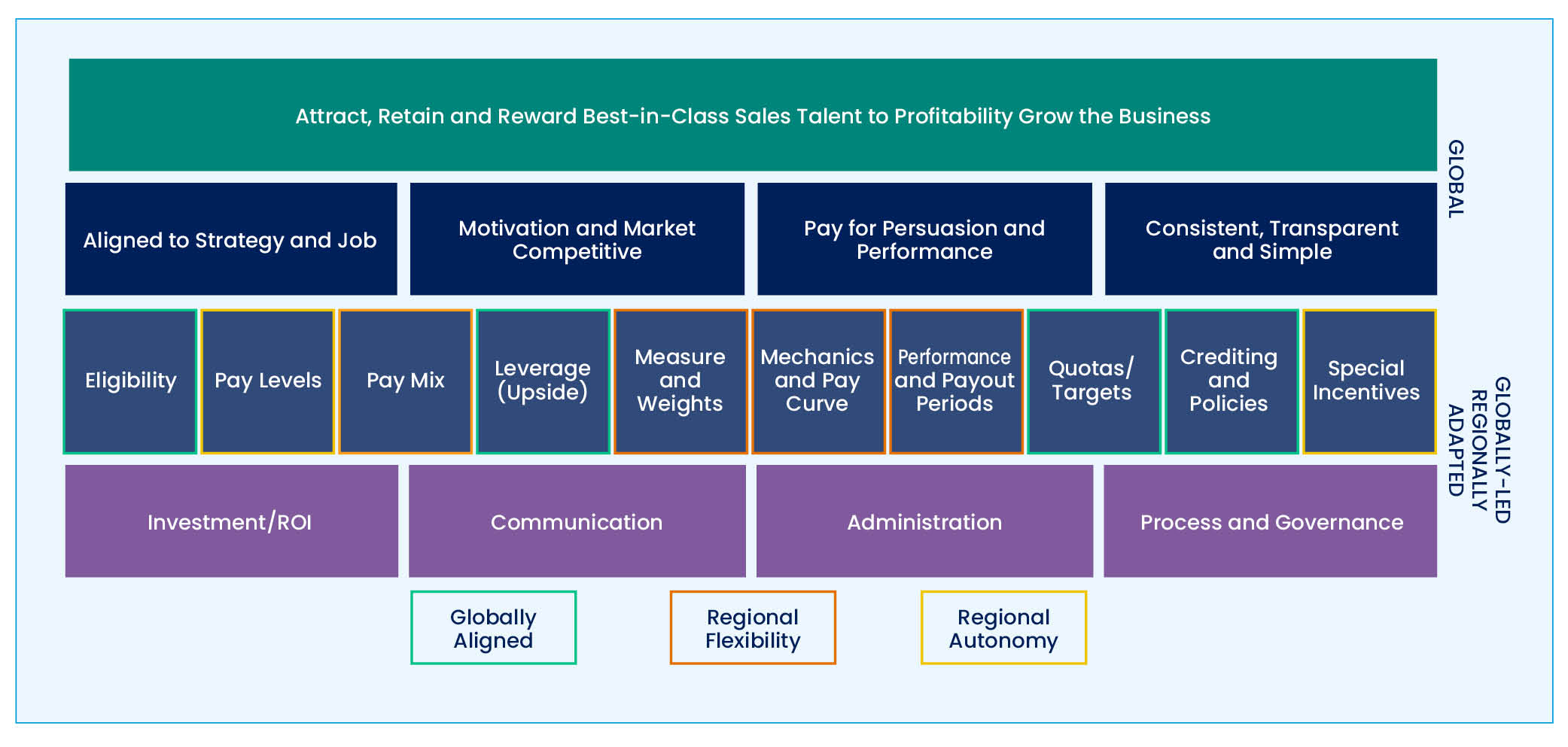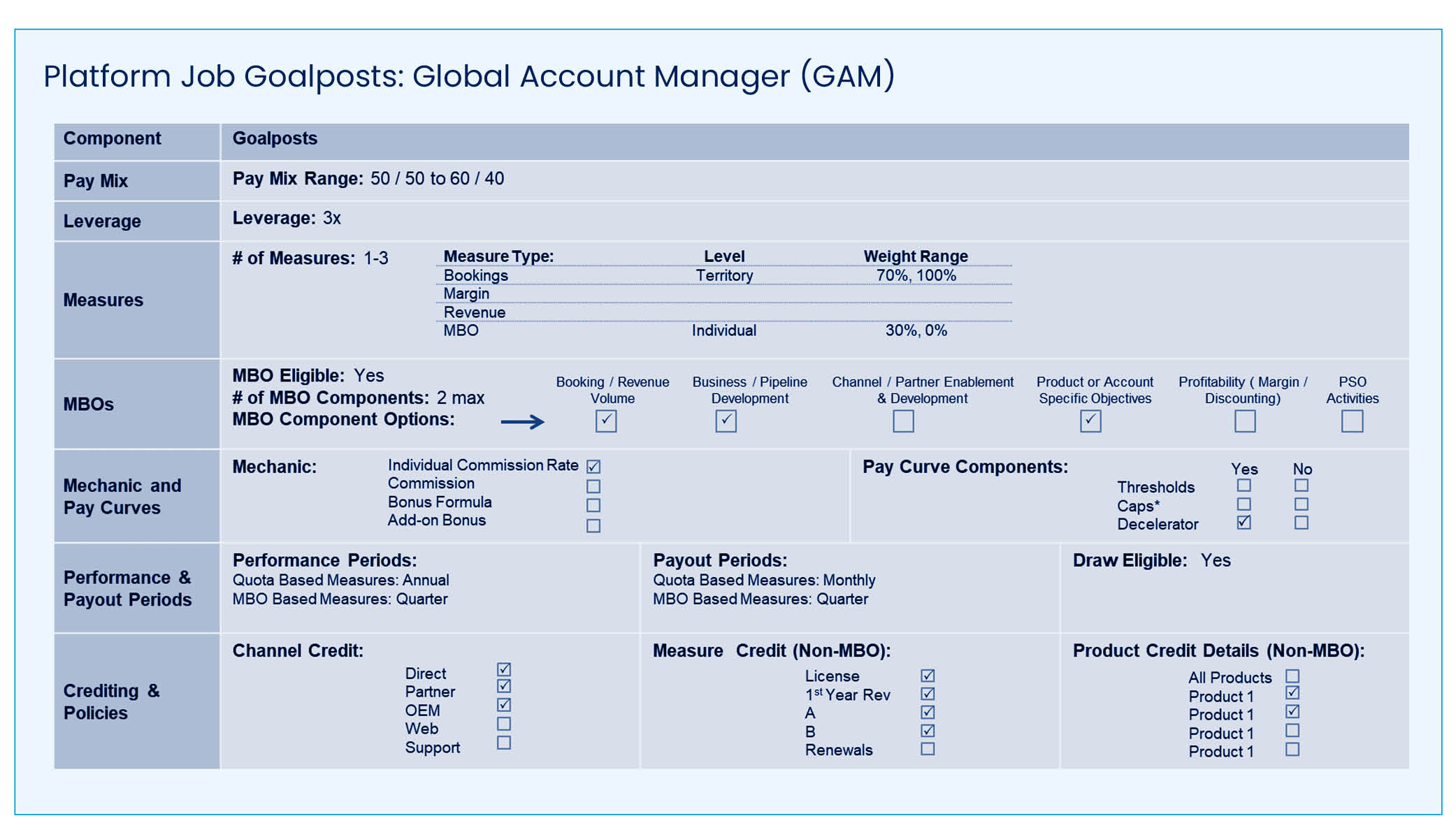- Organization growth can complicate sales compensation design. Companies have the option to develop and administer plans centrally for their global organization, or to allow for autonomy in design and execution at a more regional level
- Job titles are not the same across the globe. Job titles across geographies have the potential to vary significantly in meaning and execution, creating challenges in building the right plan for the right role. Inconsistent application of job titles also increases the risk of “gaming” the plans.
- Avoid treating markets homogenously. Balance consistency with regional requirements to help manage any misalignment of strategy and local role deployment.
- Rely on data and tools. The higher the degree of change being considered, the greater need for information technology and administration teams to be involved early in the process.
Global organizations often grow organically, resulting in diverse models and job proliferation. Over time, these organizations become increasingly complex with sophisticated coverage models and wide-ranging sales roles and job titles, resulting in the breakdown of many business planning and execution practices — including sales compensation programs.
Companies have two options in carrying out sales compensation plans: developing and administering plans centrally for their global organization or allowing for autonomy in design and execution at a regional level. An Alexander Group survey of 400 companies, which will be released soon, found that 74% of organizations with a global salesforce are using a centralized global design team and 76% execute plan governance via a centralized global team.
However, behind the numbers, these organizations are applying varying levels of standardization and local flexibility.
Avoid these three common mistakes as you’re designing and implementing your own global sales compensation program:
Mistake No. 1: Believing in Job Title Uniformity
Job titles across geographies have the potential to vary significantly in meaning and job responsibilities, creating challenges in building the right plan for the right role. Inconsistent application of job titles also increases the risk of “gaming” the plans.
How to Avoid It
Create platform jobs. A platform job is a group of similar jobs with similar responsibilities across sales motions/processes, routes-to-market, products and segments/call points. Anchoring compensation plans to platform jobs contributes to consistency in the program, ensuring the priorities of the role are aligned and helping set expectations to the field.
- Step 1: Define a set of globally consistent platform jobs to avoid platform job proliferation.
- Step 2: Develop a platform job “decision tree” to map current roles to the new platform jobs. The decision tree should be based on key job attributes such as sales process, product type and customer type.
- Step 3: Leave room to consider and account for the outlier cases. While the majority of geographies will have jobs that map into the predefined set of platform jobs, it is not uncommon to have a set of outlier cases in resource-constrained geographies. Having a predefined set of standard, blended roles that map to platform jobs adds clarity to the process and helps minimize disputes.

Leveraging a standardized framework will ensure the organization has a common starting point designing the new plans.
Mistake Number 2: Treating Markets as Homogenous
Some organizations strive for consistency as a top priority. This can result in sales compensation plans that have limited, if any, consideration for the nuances of each market, such as market maturity, go-to-market variations or cultural practices.
How to Avoid It
Balance consistency with regional requirements to help manage any misalignment of strategy and local role deployment.
- Step 1: Determine which plan components need to be globally aligned and which ones allow for regional flexibility. This will balance the desire for consistency with regional flexibility via a framework of options within key elements of the plan.
- Step 2: Define the range of plan component options that will enable regional flexibility. For instance, the design team might agree the pay mix component for account managers requires regional flexibility. The program framework should include a list of options that reflects a market’s maturity as well as any geographical nuances.
- Step 3: Leverage the framework in region to design in-region plans.

Defining guideposts for components gives local design teams the flexibility they need when leveraging the framework for their geographies. As an example, the pay mix options might be 80/20, 70/30 and 60/40.

Providing each geography with a list of potential options helps local leaders account for regional differences and market maturity while still maintaining an appropriate level of global consistency.
Mistake Number 3: Under-Relying on Data and Tools
Too often companies that look to manage a significant change don’t start talking to their IT and admin teams until the end of the design process. It’s only then that they learn that the plans cannot be timely implemented or will require significant cost to implement and administer. Standardizing measures, centralizing administration and enabling regional flexibility for some plan components can all have a material impact on the related systems and processes.
Course: Sales Compensation Course Series
How to Avoid It
The degree of change an organization is considering typically requires a commensurate level of effort during implementation. The higher the degree of change being considered, the greater need for information technology and administration teams to be involved early in the process.
- Step 1: Determine the level of change that is possible (or likely). In some cases, comp plan updates are only small tweaks, while in other cases there is an appetite/need for significant revamping.
- Step 2: Engage the IT and admin team as early as possible based on the level of expected change. Not all geographies or business units have the same level of resourcing, systems capabilities and governance processes.
- Step 3: Before the new plan designs are finalized, work with IT and the administration team to document the related requirements and build the implementation plan.
Don't wait to engage the support teams, whether they are centralized or operate more locally. Not doing so will hurt the organization’s ability to successfully implement new compensation plans.
Editor’s Note: Additional Content
For more information and resources related to this article see the pages below, which offer quick access to all WorldatWork content on these topics:







